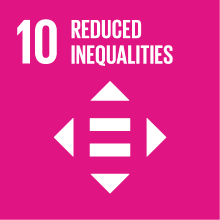WOMEN'S AND GENDER HISTORY
- Academic year
- 2021/2022 Syllabus of previous years
- Official course title
- STORIA DELLE DONNE E DI GENERE
- Course code
- FM0404 (AF:362980 AR:186430)
- Teaching language
- Italian
- Modality
- ECTS credits
- 6
- Degree level
- Master's Degree Programme (DM270)
- Academic Discipline
- M-STO/02
- Period
- 2nd Semester
- Course year
- 2
- Where
- VENEZIA
- Moodle
- Go to Moodle page
Contribution of the course to the overall degree programme goals
Expected learning outcomes
Pre-requirements
Contents
After the introductory lessons, the first part of the course will approach methodological and historiographical questions through participative seminar activities (reading, discussions, presentations).
Second part: “Love, sex and gender in Early modern Europe”. The focus will be on the following topics: the social and cultural construction of “female” and “male”; generation and procreation; “normative” and “transgressive” sexuality; male and female omosexuality; cross-dressing and role subversion.
Referral texts
1. Joan W Scott, Genere, Politica, Storia, a cura di I. Fazio, Roma, Viella, 2013, pp. 1-130.
SECOND PART:
Fernanda Alfieri, Impossibili unioni di uguali. L’amore tra donne nel discorso teologico e giuridico (secoli XVI-XVIII), «Dimensioni e problemi della ricerca storica», II, 2012, pp. 105-126.
Georgia Arrivo, Seduzioni, promesse, matrimoni. Il processo per stupro nella Toscana del Settecento, Edizioni di storia e letteratura, Roma, 2006.
Enrica Asquer (ed.), Culture della sessualità. Identità, esperienze, contesti, «Genesis. Rivista della Società Italiana delle Storiche», XI/1.2, 2012.
Marzio BARBAGLI, Storia di Caterina che per ott’anni vestì da uomo, Bologna, Il Mulino, 2008.
Gigi CORAZZOL e Loredana CORRA’, Esperimenti d'amore : fatti di giovani nella Feltre del Cinquecento, Vicenza, Odeonlibri, 1981.
Katherine Crawford, Possibility, and Perversion: Rethinking the Study of Early Modern Sexuality, « The Journal of Modern History», Vol. 78, No. 2 (June 2006), pp. 412-433.
Ead., European Sexualities, 1400-1800, Cambridge, Cambridge University Press.
Maia De Leo, Omosessualità e studi storici, «Storica», IX (27), 2003, pp. 27-60.
Ead., Queer. Storia culturale della comunità LGBTQ, Torino, Einaudi 2021.
Laura Gowing, Common Bodies: Women, Touch, and Power in Seventeenth-Century England, New Haven, CT, Yale University Press, 2003.
Umberto GRASSI e Giuseppe MARCOCCI (eds.), Le trasgressioni della carne. Il desiderio omosessuale nel mondo islamico e cristiano (secc. XII-XX), Roma: Viella, 2015
Umberto GRASSI, Sodoma. Persecuzioni, affetti, pratiche sociali (secoli V-XVIII), Roma, Carocci, 2019.
Umberto Grassi, Vincenzo Lagioia, Gian Paolo Romagnani (eds.), Tribadi, sodomiti, invertite e invertiti, pederasti, femminelle, ermafroditi…. Per una storia dell’omosessualità, della bisessualità e delle trasgressioni di genere in Italia, Pisa, ETS 2017.
Thomas Laqueur, L’identità sessuale dai greci a Freud, Roma-Bari, Laterza 1990.
Giuseppe Marcocci, Matrimoni omosessuali nella Roma del tardo Cinquecento. Su un passo del «Journal» di Montaigne, «Quaderni storici»,XLV (1) , n. 133, 2010, pp. 107-138.
Katherine Park, Secrets of Women: Gender, Generation, and the Origins of Human Dissection. New York, Zone, 2006
Luisa Passerini e Nerina Milletti (a cura di), Fuori dalla norma: storie lesbiche nell'Italia della prima metà del Novecento, Torino, Rosenberg & Sellier, 2007.
N. Pellegrin e C. Bard (eds.), Femmes travesties: un ‘mauvais’ genre, «Clio. Femmes, Genre, Histoire», X, (1999)
https://clio.revues.org
Tommaso Scaramella, La storia dell'omosessualità nell'Italia moderna: un bilancio: https://storicamente.org/omosessualita_storia_italia_scaramella
Laura Schettini, Il gioco delle parti. Travestimenti e paure sociali tra Otto e Novecento, Le Monnier, Firenze 2011.
Merry E.Wiesner-Hanks, Christianity and Sexuality in the Early Modern World. Regulating Desire, Reforming Practice (third edition), Routledge, NY, 2020
STUDENTS WHO CAN'T ATTEND THE COURSE: see the section below
Assessment methods
Students who can't attend the course: written examination on the following texts (part 1+2+3):
1) J. W Scott, Genere, Politica, Storia, a cura di I. Fazio, Roma, Viella, 2013, pp. 1-130, unitamente a G. Pomata, La storia delle donne: una questione di confine, in Il mondo contemporaneo. Gli strumenti della ricerca 2: Questioni di metodo. Firenze, La Nuova Italia, 1983.
2) One of the following handbooks:
M. E. Wiesner, Le donne nell’Europa moderna, 1500-1750. Torino, Einaudi, 2017
G. Bock, Le donne nella storia d'Europa, Roma-Bari, Laterza, 2001.
3) two of the following books:
Francesca Arena, Trouble dans la maternité. Pour une histoire des folies puerpérales, XVIIIe-XXe siècles, Presses Universitaire de Provence, 2020.
Georgia Arrivo, Seduzioni, promesse, matrimoni. Il processo per stupro nella Toscana del Settecento, Edizioni di storia e letteratura, Roma, 2006.
Enrica Asquer (ed.), Culture della sessualità. Identità, esperienze, contesti, «Genesis. Rivista della Società Italiana delle Storiche», XI/1.2, 2012. (pp.7-229)
Marzio Barbagli, Comprare piacere. Sessualità e amore venale dal Medioevo a oggi, Bologna, il Mulino 2020.
Katherine Crawford, European Sexualities, 1400-1800, Cambridge, Cambridge University Press.
Nadia M. Filippini, Tiziana Plebani, Anna Scattigno (eds.), Corpi e storia. Donne e uomini dal mondo antico all’età contemporanea, Roma, Viella, 2002.
Umberto Grassi e Giuseppe Marcocci (eds.), Le trasgressioni della carne. Il desiderio omosessuale nel mondo islamico e cristiano (secc. XII-XX), Roma: Viella, 2015.
Umberto Grassi, Sodoma. Persecuzioni, affetti, pratiche sociali (secoli V-XVIII), Roma, Carocci, 2019.
Umberto Grassi, Vincenzo Lagioia, Gian Paolo Romagnani (eds.), Tribadi, sodomiti, invertite e invertiti, pederasti, femminelle, ermafroditi…. Per una storia dell’omosessualità, della bisessualità e delle trasgressioni di genere in Italia, Pisa, ETS 2017.
Scott Hendrix and Susan Karant Nunn (eds.), Masculinity in the Reformation Era, Sixteenth Century Essays and Studies, Kirksville Missouri, 2008.
Thomas Laqueur, L’identità sessuale dai greci a Freud, Roma-Bari, Laterza 1990.
Luisa Passerini e Nerina Milletti (a cura di), Fuori dalla norma: storie lesbiche nell'Italia della prima metà del Novecento, Torino, Rosenberg & Sellier, 2007.
Laura Schettini, Il gioco delle parti. Travestimenti e paure sociali tra Otto e Novecento, Le Monnier, Firenze 2011.
Giulietta Stefani, Colonia per maschi. Italiani in Africa Orientale: una storia di genere, Verona, Ombre Corte, 2007
Sylvie Steinberg (ed.), Une Histoire des Sexualités, Paris, PUF, 2018.
Merry E.Wiesner-Hanks, Christianity and Sexuality in the Early Modern World. Regulating Desire, Reforming Practice (third edition), Routledge, NY, 2020
Type of exam
Teaching methods
Further information
2030 Agenda for Sustainable Development Goals
This subject deals with topics related to the macro-area "Poverty and inequalities" and contributes to the achievement of one or more goals of U. N. Agenda for Sustainable Development




